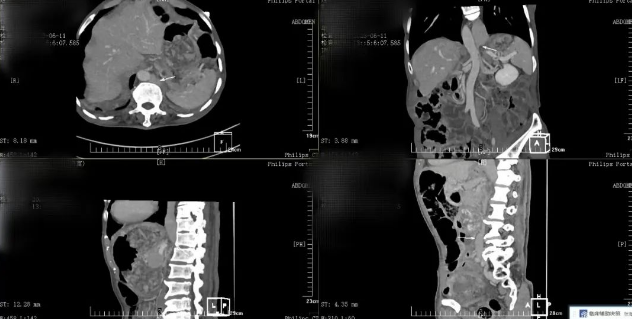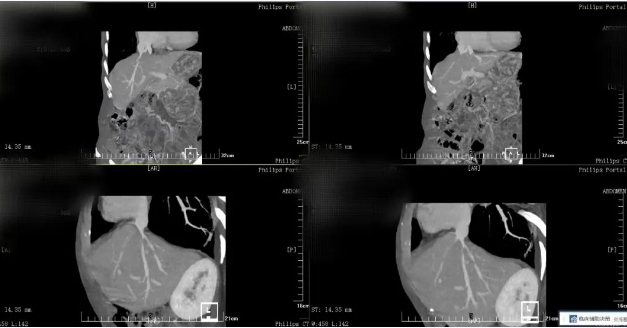The human heart beats approximately 2.5-3 billion times in its lifetime. Normal adults' heart rate fluctuates between 60-100 beats per minute during rest, even when they are at rest, the heart is still working diligently. It can be said that every heartbeat is a continuation of life notes, and the frequency and rhythm of this also reflect the health status of the body.
Recently, under the guidance of Zhang Weize, vice president of the heart hospital, Lian Cheng, vice director of the arrhythmia team, successfully performed emergency radiofrequency ablation for an elderly patient with Atrial flutter and preexcitation syndrome, saving the patient's life.
Suddenly, his heart beat very fast and he didn't know anything at all. "Recalling the scene at that time, Mr. Zhang felt a lingering palpitations.
Mr. Zhang, a 65 year old patient who lives in Yulin and has been in good health, suddenly fainted three times last week. In order to investigate the cause, Muming came to Xi'an International Medical Center Hospital for treatment. After consultation in cardiac surgery and internal cardiology department, Deputy Chief Physician Chen Xiaoan considered that the patient was "atrial flutter with collateral pathway passing forward", and syncope was caused by hemodynamic instability caused by fast ventricular rate, so radiofrequency ablation was required.
But an accident occurred, and on the night of hospitalization, Mr. Zhang suddenly had palpitations, with a heart rate of about 210 beats per minute. In just a few minutes, continuously fainted 6 times, each lasting for several seconds. The ECG examination found that the "Atrial flutter and preexcitation syndrome" that Mr. Zhang suffered from had a 1:1 accessory pathway prograde of atrial flutter.
Data show that Atrial flutter refers to the abnormal electrical signal transmission pathway of the patient's atrium, and the electrical signal turns back in the atrium, causing the atrial pulse to be too fast. Generally, the condition of simple atrial flutter or simple preexcitation is relatively stable. However, in patients with Atrial flutter or Atrial fibrillation combined with preexcitation, because of the rapid atrial rate, the ventricular rate may be transmitted down the accessory pathway too fast, sometimes more than 200 times per minute, which will cause severe malignant arrhythmias such as ventricular tachycardia, ventricular flutter, and ventricular fibrillation. Therefore, atrial arrhythmia combined with preexcitation syndrome is a very serious arrhythmia disease that may lead to sudden death of patients.


"Radiofrequency ablation treatment requires doctors, engineers, three-dimensional machines, etc. to be all in place, usually Elective surgery. But the simultaneous occurrence of 'Atrial flutter and preexcitation syndrome' is rare and very urgent. If patients do not operate in time, it will endanger their lives." Chen Xiao'an, deputy chief physician, said.
So that night, under the guidance of Vice President Zhang Weize, Deputy Director Lian Cheng immediately assembled the arrhythmia team. Deputy Chief physician Chen Xiao'an, attending physician Wang Zhigang and Doctor Han Yang rushed to the hospital to start DSA.
At 10:30 pm, with the full cooperation of catheterization technicians and nurses, our hospital's first emergency radiofrequency ablation surgery officially began. But what surprised me was that the house leak happened to be accompanied by continuous night rain! During the operation, Lian Cheng, Deputy Director, found that the patient was a rare variant of Inferior vena cava. "The hepatic segment of the patient's Inferior vena cava is absent. The left and right iliac veins flow into the semiazygos vein and then flow into the right atrium through the Superior vena cava. The guide wire can enter the hepatic vein through the right atrium, and the hepatic vein is connected to the right atrium." Lian Cheng, deputy director, introduced that there is no normal surgical path, which greatly increases the difficulty of operation, but the team members have solid basic skills in interventional operation, and the catheter is in place quickly. After more than four hours of effort, we successfully implemented cardiac electrophysiological examination, three-dimensional mapping, radiofrequency ablation, and temporary pacemaker implantation for the patient, allowing their heartbeat to return to normal.
Mr. Zhang finally got out of danger and returned to the ward for comprehensive treatment such as correcting heart failure.

I didn't expect such a rare illness to be hit by me. But I also feel lucky to have met a skilled expert who pulled me back from the line of death. "Upon discharge, Mr. Zhang expressed his gratitude to the medical staff.